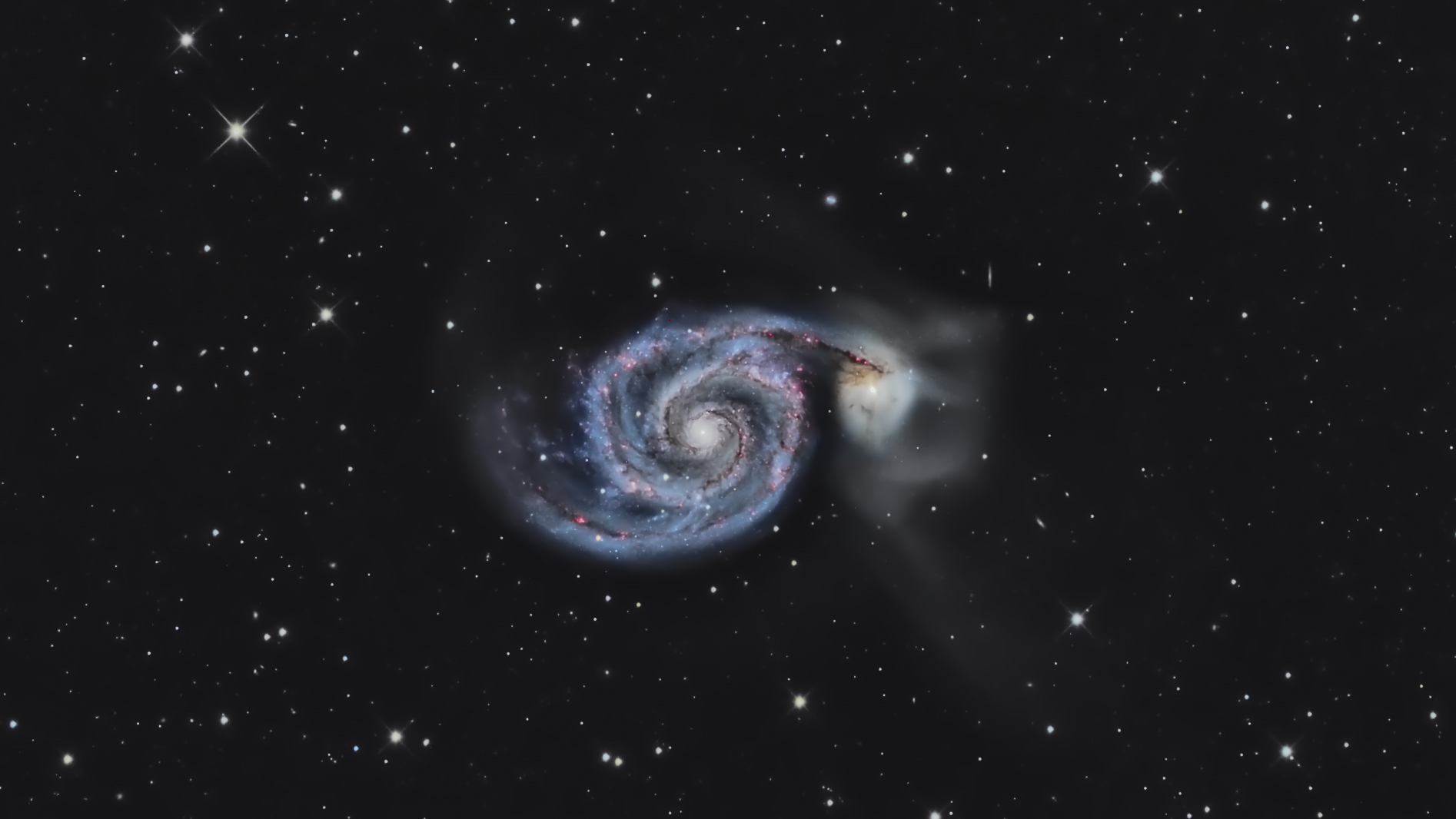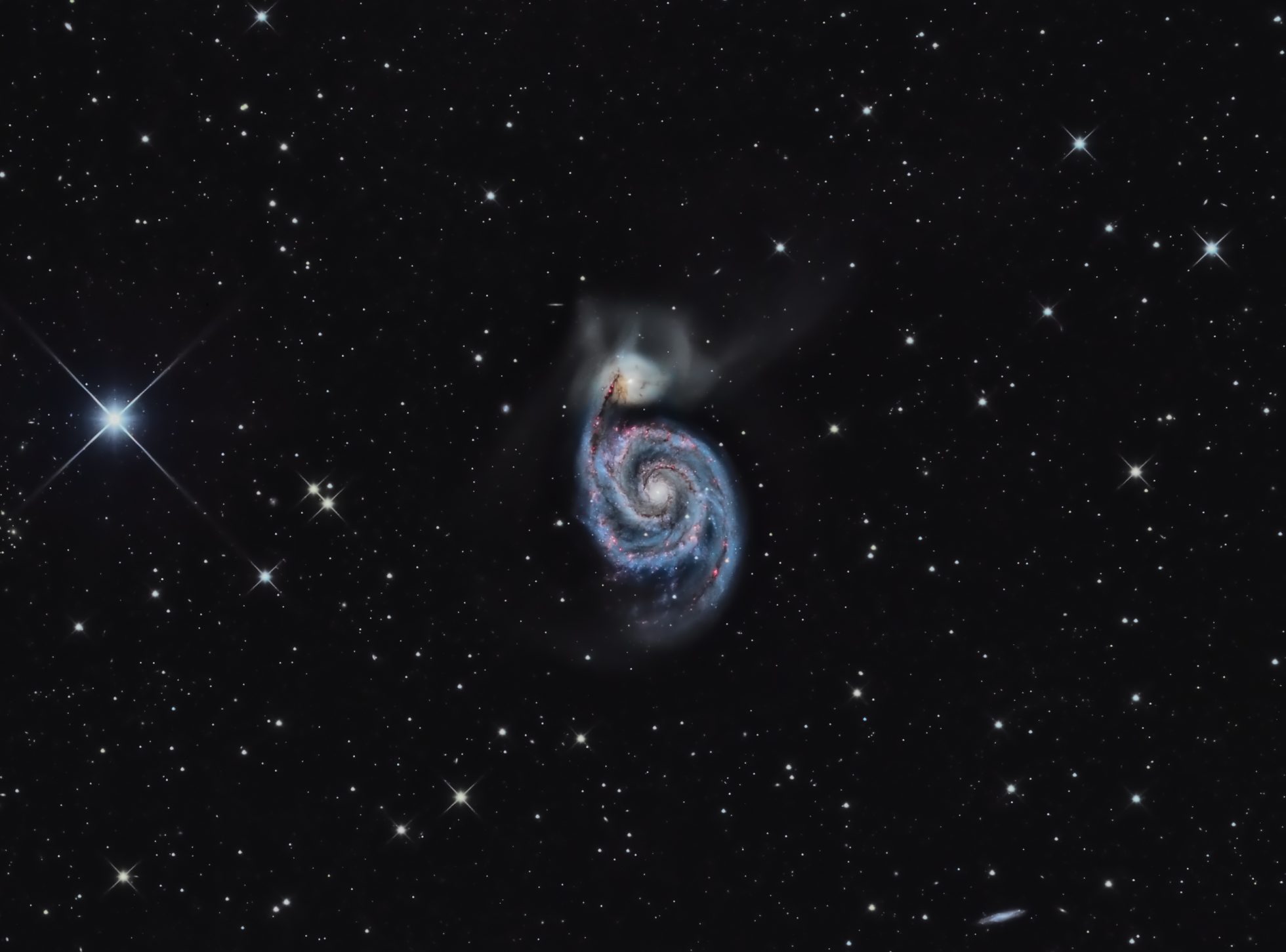This bright galaxy pair is near the Big Dipper’s tail and is an easy target with a telescope at a dark sky site. The face-on Whirlpool Galaxy (M51a) is devouring its smaller companion M51b in a massive galactic collision. The resulting gravitation interaction has spurred star formation in the whirlpool galaxy (pink regions seen in the image). The interaction also results in spectacular spiral arms of the whirlpool.
Both the galaxies are thought to have supermassive black holes at their respective center. Chandra X-Ray Observatory has studied NGC 5195 for its X-ray emissions and has found a very active black hole at its center. http://chandra.harvard.edu/photo/2016/ngc5195/
Imaging Notes:
This image was one of our first images with the new set up with F3.8 10” Newtonian. The scope with a corrector, focuser, and camera do push the limits of MyT. However, the set up performed extremely well during the imaging at Calstar.
One can spot about 15+ galaxies in the image as this area is rife with background galaxies.
Weather, bad-seeing, and especially winds did not cooperate during the first night, and most of the data obtained were on the second night.
Star-forming regions in Whirlpool emit powerful Hydrogen Alpha(Ha) light due to ionized hydrogen gas. Ha data was captured with 5nm filters from our backyard in Santa Clara.
| Catalogue Name | Whirlpool Galaxy (M51a, NGC 5194), M51b NGC 5195 |
| Constellation | Canes Venatici |
| Distance (Light Years) | ~23 Million Light Years |
| Photographic Information | |
| Exposure | HaLRGB (Lx10, 5x RGB, 30x Ha) |
| Equipment | F3.8 AGO 10” Imaging Newt, QSI 683wsg, Paramount MyT, SSAG Auto-guider |
| Processing | Pixinsight, Adobe PS |
| Imaging Location | Calstar 2018 – Lake San Antonio, CA |


